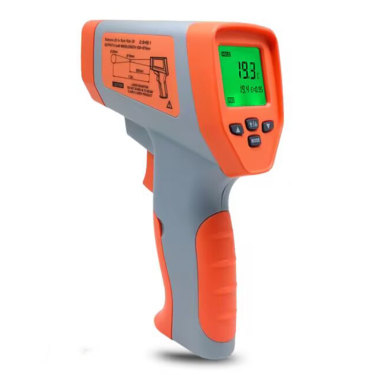How to Use a Cooking Thermometer for Perfectly Cooked Meals

# How to Use a Cooking Thermometer for Perfectly Cooked Meals
## Introduction
A cooking thermometer is an essential tool for any home cook or professional chef. It takes the guesswork out of cooking, ensuring your meats are perfectly cooked to safe temperatures while maintaining ideal texture and juiciness. Whether you’re grilling steaks, roasting chicken, or baking bread, a reliable thermometer can make all the difference in your culinary results.
## Types of Cooking Thermometers
### Instant-Read Thermometers
These provide quick temperature readings (usually within 2-5 seconds) and are perfect for checking doneness at the end of cooking. They’re not designed to stay in food during cooking.
### Leave-In Thermometers
These remain in the food throughout the cooking process, often with a probe that connects to a display outside the oven. Great for roasts and other large cuts of meat.
### Oven-Safe Thermometers
Similar to leave-in thermometers but designed to withstand oven temperatures without a separate display unit.
### Candy/Deep-Fry Thermometers
Specialized thermometers for measuring high temperatures needed for candy making and deep frying.
## How to Properly Use a Cooking Thermometer
### 1. Choose the Right Thermometer for Your Needs
Keyword: cooking thermometer
Consider what you’ll be cooking most often. A basic instant-read thermometer works for most meats, while candy makers will need a specialized high-temperature model.
### 2. Insert the Thermometer Correctly
For most meats, insert the probe into the thickest part, avoiding bones and fat. For poultry, check the thigh and breast. For ground meats, check multiple spots.
### 3. Wait for the Reading to Stabilize
With instant-read thermometers, wait until the temperature stops rising (usually a few seconds). With leave-in models, monitor until the desired temperature is reached.
### 4. Know Your Target Temperatures
Here are some key safe minimum internal temperatures:
- Poultry: 165°F (74°C)
- Ground meats: 160°F (71°C)
- Pork: 145°F (63°C)
- Beef, lamb, veal (steaks/roasts): 145°F (63°C)
- Fish: 145°F (63°C)
### 5. Clean Your Thermometer Properly
Always wash the probe with hot, soapy water after each use to prevent cross-contamination.
## Tips for Best Results
– Calibrate your thermometer regularly (most can be adjusted with a small wrench or screwdriver)
– For thin cuts, insert the probe at an angle to get a better reading
– Let meats rest after cooking (temperature will continue to rise 5-10°F)
– For large roasts, check temperature in multiple spots
– Avoid letting the probe touch the cooking pan or grill grates
## Common Mistakes to Avoid
– Not checking temperature in the thickest part of the food
– Relying on cooking time alone
– Not accounting for carryover cooking
– Using a damaged or uncalibrated thermometer
– Not cleaning the thermometer between uses
## Conclusion
Investing in a quality cooking thermometer and learning to use it properly will transform your cooking. No more dry chicken or undercooked pork – just perfectly cooked meals every time. With practice, you’ll develop an instinct for when to check temperatures and how to interpret the readings for optimal results.